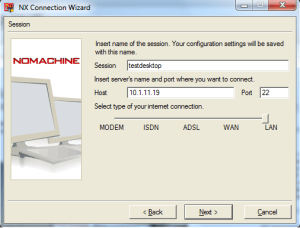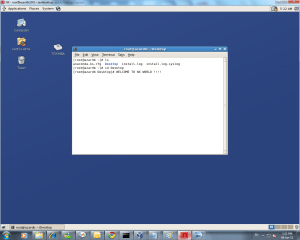How to export from oracle 11.2 and import into 10.2 version
I think many OTN users asked repeately this question How do i export from higher version and import into lower version.I just show here How do we do.
First : Using Datapump from Oralce 11.2 and import into 10.2 version
Source DB 11.2 Version :
Step 1: Create Directory
SQL> create or replace directory test_dir as 'D:\backupnew\dump'; Directory created. SQL> grant read,write on directory test_dir to scott; Grant succeeded. SQL> conn scott/tiger@azardb Connected. SQL> create table testversion(version varchar2(20)); Table created. SQL> insert into testversion values('oralce11gr2'); 1 row created. SQL> commit; Commit complete.
Step 2: Export Table using Datapump
C:\Users\mazar>expdp scott/tiger@azardb directory=test_dir dumpfile=testver.dmp tables=testversion Export: Release 11.2.0.1.0 - Production on Sun Jan 23 15:54:13 2011 Copyright (c) 1982, 2009, Oracle and/or its affiliates. All rights reserved. Connected to: Oracle Database 11g Enterprise Edition Release 11.2.0.1.0 - Production With the Partitioning, OLAP, Data Mining and Real Application Testing options Starting "SCOTT"."SYS_EXPORT_TABLE_01": scott/********@azardb directory=test_dir dumpfile=testver.dmp tables=testversion Estimate in progress using BLOCKS method... Processing object type TABLE_EXPORT/TABLE/TABLE_DATA Total estimation using BLOCKS method: 64 KB Processing object type TABLE_EXPORT/TABLE/TABLE . . exported "SCOTT"."TESTVERSION" 5.031 KB 1 rows Master table "SCOTT"."SYS_EXPORT_TABLE_01" successfully loaded/unloaded ****************************************************************************** Dump file set for SCOTT.SYS_EXPORT_TABLE_01 is: D:\BACKUPNEW\DUMP\TESTVER.DMP Job "SCOTT"."SYS_EXPORT_TABLE_01" successfully completed at 15:54:40 Now Go to Target DB 10.2 Version
Step 3: Create Directory for Scott User.
SQL> create or replace directory test_dir as 'd:\newdump'; Directory created. SQL> grant read,write on directory test_dir to scott; Grant succeeded.
Step 3: I just Copied this TESTVER.DMP file into target DB 10.2 Directory and import it
D:\oracle\product\10.2.0\db_2\BIN>impdp scott/tiger@ace directory=test_dir dumpf ile=testversion.dmp tables=testversion Import: Release 10.2.0.1.0 - 64bit Production on Sunday, 23 January, 2011 16:04: 31 Copyright (c) 2003, 2005, Oracle. All rights reserved. Connected to: Oracle Database 10g Enterprise Edition Release 10.2.0.1.0 - 64bit Production With the Partitioning, OLAP and Data Mining options ORA-39001: invalid argument value ORA-39000: bad dump file specification ORA-39143: dump file "d:\newdump\testversion.dmp" may be an original export dump file
It showing error, So you need to export Data in source db 11.2 using Version parameter
Step 4:
C:\Users\mazar>expdp scott/tiger@azardb directory=test_dir dumpfile=testver.dmp tables=testversion version=10.2 reuse_dumpfiles=yes Export: Release 11.2.0.1.0 - Production on Sun Jan 23 16:06:47 2011 Copyright (c) 1982, 2009, Oracle and/or its affiliates. All rights reserved. Connected to: Oracle Database 11g Enterprise Edition Release 11.2.0.1.0 - Production With the Partitioning, OLAP, Data Mining and Real Application Testing options Starting "SCOTT"."SYS_EXPORT_TABLE_01": scott/********@azardb directory=test_dir dumpfile=testver.dmp tables=testversion version=10.2 reuse_dumpfiles=yes Estimate in progress using BLOCKS method... Processing object type TABLE_EXPORT/TABLE/TABLE_DATA Total estimation using BLOCKS method: 64 KB Processing object type TABLE_EXPORT/TABLE/TABLE . . exported "SCOTT"."TESTVERSION" 4.968 KB 1 rows Master table "SCOTT"."SYS_EXPORT_TABLE_01" successfully loaded/unloaded ****************************************************************************** Dump file set for SCOTT.SYS_EXPORT_TABLE_01 is: D:\BACKUPNEW\DUMP\TESTVER.DMP Job "SCOTT"."SYS_EXPORT_TABLE_01" successfully completed at 16:06:54
Step 5: Again I copied this dump file to target DB 10.2 directory and import it.
D:\oracle\product\10.2.0\db_2\BIN>impdp scott/tiger@ace directory=test_dir dumpf ile=testver.dmp tables=testversion remap_tablespace=users_tbs:users Import: Release 10.2.0.1.0 - 64bit Production on Sunday, 23 January, 2011 16:08: 37 Copyright (c) 2003, 2005, Oracle. All rights reserved. Connected to: Oracle Database 10g Enterprise Edition Release 10.2.0.1.0 - 64bit Production With the Partitioning, OLAP and Data Mining options Master table "SCOTT"."SYS_IMPORT_TABLE_01" successfully loaded/unloaded Starting "SCOTT"."SYS_IMPORT_TABLE_01": scott/********@ace directory=test_dir d umpfile=testver.dmp tables=testversion remap_tablespace=users_tbs:users Processing object type TABLE_EXPORT/TABLE/TABLE Processing object type TABLE_EXPORT/TABLE/TABLE_DATA . . imported "SCOTT"."TESTVERSION" 4.968 KB 1 rows Job "SCOTT"."SYS_IMPORT_TABLE_01" successfully completed at 16:08:39 D:\oracle\product\10.2.0\db_2\BIN>
Now I successfully import it.
Same Like If you want Import oracle 9i version from export taking of 10g version dumpfile, you just use to export 9.2 export client of Source DB 10.2 data and then import it.
Sourcedb : azardb , Version :11.2
Unfortunately I don’t have Oracle 9i software.So i jsut used 11.2 and 10.2
D:\oracle\product\10.2.0\db_2\BIN>exp scott/tiger@azardb file=d:\newdump\testver sion.dmp tables=test Export: Release 10.2.0.1.0 - Production on Sun Jan 23 15:10:32 2011 Copyright (c) 1982, 2005, Oracle. All rights reserved. Connected to: Oracle Database 11g Enterprise Edition Release 11.2.0.1.0 - Produc tion With the Partitioning, OLAP, Data Mining and Real Application Testing options Export done in AR8MSWIN1256 character set and AL16UTF16 NCHAR character set About to export specified tables via Conventional Path ... . . exporting table TEST 1 rows exported Export terminated successfully without warnings. Target DB : ACE Version :10.2 D:\oracle\product\10.2.0\db_2\BIN>set oracle_sid=ace D:\oracle\product\10.2.0\db_2\BIN>imp scott/tiger@ace file=d:\newdump\testversio n.dmp tables=test Import: Release 10.2.0.1.0 - Production on Sun Jan 23 15:11:03 2011 Copyright (c) 1982, 2005, Oracle. All rights reserved. Connected to: Oracle Database 10g Enterprise Edition Release 10.2.0.1.0 - 64bit Production With the Partitioning, OLAP and Data Mining options Export file created by EXPORT:V10.02.01 via conventional path import done in AR8MSWIN1256 character set and AL16UTF16 NCHAR character set . importing SCOTT's objects into SCOTT . importing SCOTT's objects into SCOTT . . importing table "TEST" 1 rows imported Import terminated successfully without warnings.













